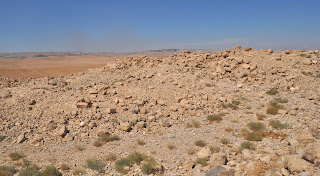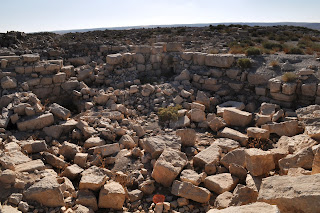I traveled back to Germany to attend an academic conference at the University of Bamberg about the Dome of the Rock in Jewish, Christian and Islamic Perspective.
I arrived in Frankfurt on Sunday morning November 18 and took the train to Bamberg, arriving in the late afternoon. I went to the hotel where I had made a booking over the internet, only to discover that there is no receptionist there on Sunday afternoons. People who arrive are supposed to call a phone number to find out how to get the room key from a storage box. But my repeated attempts to call were unanswered, so I eventually gave up and went to another hotel, arriving just minutes before their own reception desk closed for the evening.
The next morning I went to the first hotel to find out what had happened; I preferred to stay where I now was and I was able to cancel my reservation for the full days of my stay without any penalty.
Over the following days I spent some time in the University library, mostly proofreading the Gustaf Dalman volumes and working on my presentation for the conference. On Wednesday November 21 I spoke on the phone with my colleague in Mainz, Johannes Pahlitzsch, about my proposal for a three-year research grant that had been turned down; he had recently received the official comments of the evaluators, which were mostly positive. So it seems that I can rework the application and reapply.
The Dome of the Rock symposium started Friday afternoon November 23 and continued Saturday morning. I gave a presentation about the Dome of the Rock in the Ottoman period.
Hanswulf Bloedhorn from Tübingen came to attend the conference, so after the conference ended, he, my Bamberg colleague Klaus Bieberstein and I had the chance to talk over our Jerusalem sites and monuments project, which has been stalled for a couple of years now; there is little prospect that we will finish the project in its original encyclopedic form.
Spread throughout the University of Bamberg campus is a temporary art exhibit consisting of a number of sculptures of seated figures on poles that light up at night with colors that change every minute or so. They seemed very out of place to me.
On Sunday November 25 I took the train to the Frankfurt airport for my evening flight back to Amman. This last month of travel had worked out well, with my being able to fit my annual family visit to the USA in between two conferences in Germany.
I arrived in Frankfurt on Sunday morning November 18 and took the train to Bamberg, arriving in the late afternoon. I went to the hotel where I had made a booking over the internet, only to discover that there is no receptionist there on Sunday afternoons. People who arrive are supposed to call a phone number to find out how to get the room key from a storage box. But my repeated attempts to call were unanswered, so I eventually gave up and went to another hotel, arriving just minutes before their own reception desk closed for the evening.
The next morning I went to the first hotel to find out what had happened; I preferred to stay where I now was and I was able to cancel my reservation for the full days of my stay without any penalty.
Over the following days I spent some time in the University library, mostly proofreading the Gustaf Dalman volumes and working on my presentation for the conference. On Wednesday November 21 I spoke on the phone with my colleague in Mainz, Johannes Pahlitzsch, about my proposal for a three-year research grant that had been turned down; he had recently received the official comments of the evaluators, which were mostly positive. So it seems that I can rework the application and reapply.
The Dome of the Rock symposium started Friday afternoon November 23 and continued Saturday morning. I gave a presentation about the Dome of the Rock in the Ottoman period.
Hanswulf Bloedhorn from Tübingen came to attend the conference, so after the conference ended, he, my Bamberg colleague Klaus Bieberstein and I had the chance to talk over our Jerusalem sites and monuments project, which has been stalled for a couple of years now; there is little prospect that we will finish the project in its original encyclopedic form.
Spread throughout the University of Bamberg campus is a temporary art exhibit consisting of a number of sculptures of seated figures on poles that light up at night with colors that change every minute or so. They seemed very out of place to me.
One of the sculptures
On Sunday November 25 I took the train to the Frankfurt airport for my evening flight back to Amman. This last month of travel had worked out well, with my being able to fit my annual family visit to the USA in between two conferences in Germany.








































